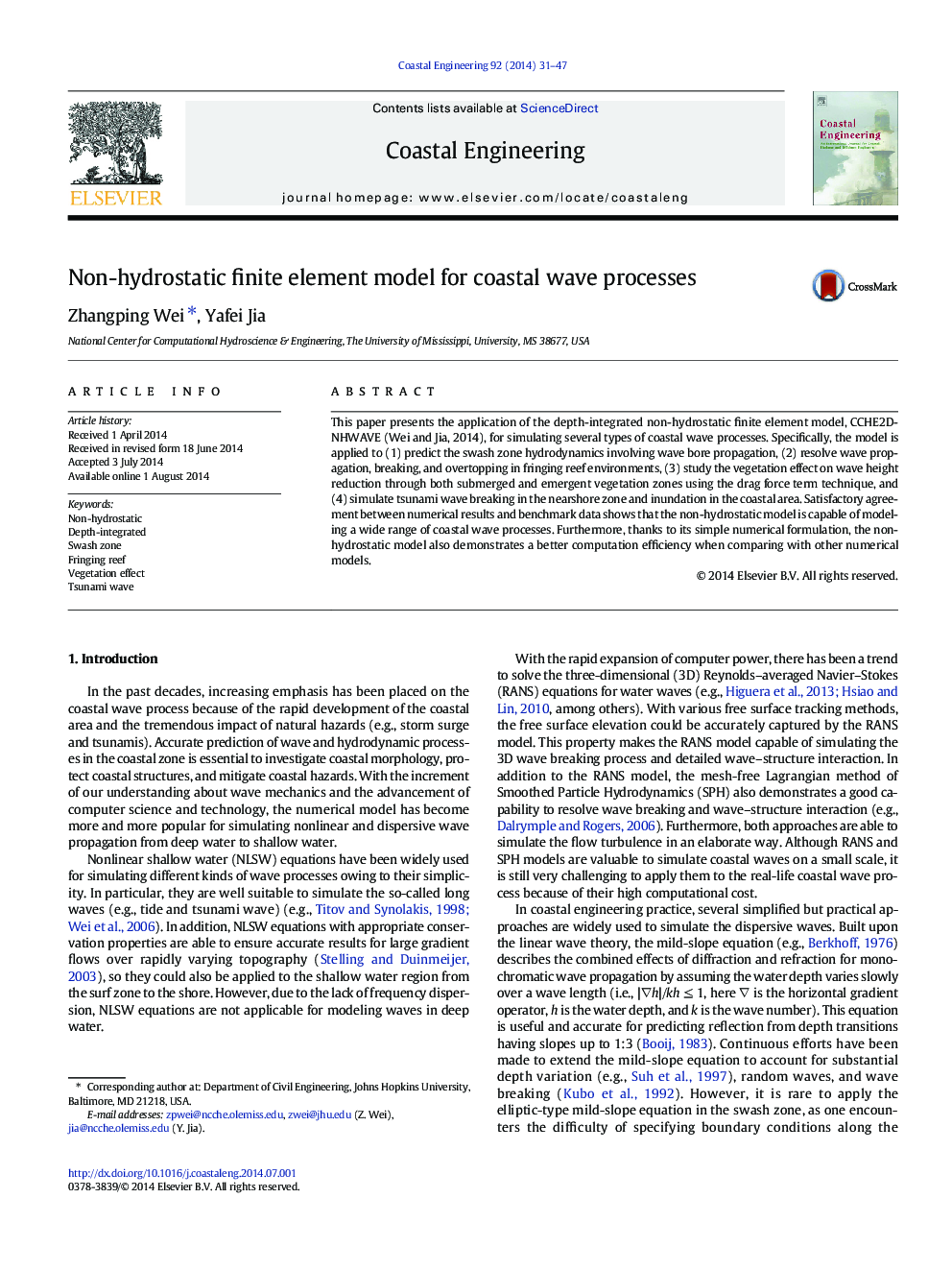| Article ID | Journal | Published Year | Pages | File Type |
|---|---|---|---|---|
| 1720739 | Coastal Engineering | 2014 | 17 Pages |
•The model is suitable to simulate weakly dispersive waves.•The model handles the energetic wave breaking process in nearshore zone efficiently.•The drag-force-term technique is used to consider wave attenuation by vegetation.•The model shows better computation efficiency than other models (e.g., RANS models).
This paper presents the application of the depth-integrated non-hydrostatic finite element model, CCHE2D-NHWAVE (Wei and Jia, 2014), for simulating several types of coastal wave processes. Specifically, the model is applied to (1) predict the swash zone hydrodynamics involving wave bore propagation, (2) resolve wave propagation, breaking, and overtopping in fringing reef environments, (3) study the vegetation effect on wave height reduction through both submerged and emergent vegetation zones using the drag force term technique, and (4) simulate tsunami wave breaking in the nearshore zone and inundation in the coastal area. Satisfactory agreement between numerical results and benchmark data shows that the non-hydrostatic model is capable of modeling a wide range of coastal wave processes. Furthermore, thanks to its simple numerical formulation, the non-hydrostatic model also demonstrates a better computation efficiency when comparing with other numerical models.
